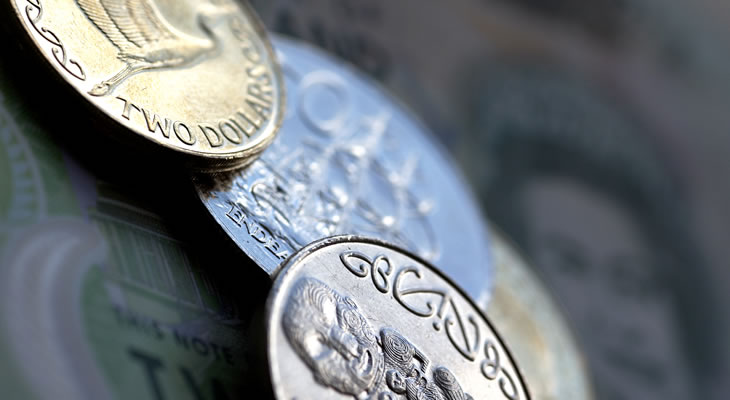- Stronger US payrolls failed to weigh on New Zealand Dollar – Underlying signs of weakness boosted commodity-currency demand
- Chinese inflation weakened in June – ‘Kiwi’ muted by rising risk aversion
- Premature end to Tory leadership race boosted Pound demand – Markets reassured by prospect of shorter period of uncertainty
- BoE predicted to cut interest rates on Thursday – GBP NZD exchange rate likely to weaken in response
In spite of stronger New Zealand data the GBP NZD exchange rate returned to an uptrend on Monday morning, boosted by the surprise withdrawal of Andrea Leadsom from the Conservative leadership contest.
Mixed US Payrolls Report Pushed GBP NZD Exchange Rate to Decade Low
Initially the Pound (GBP) slowed its downtrend on Friday morning, boosted by a smaller-than-expected narrowing of the May trade deficit. Investors were reassured by the data, in spite of the fact that conditions are likely to have deteriorated substantially since then thanks to Brexit-based uncertainty. This mood of optimism overshadowed a worrying post-referendum GfK Consumer Confidence Index, which slid from -1 to -9 as anxiety over the outlook of the domestic economy mounted.
Demand for the New Zealand Dollar (NZD), on the other hand, rallied strongly in the wake of the latest US Non-Farm Payrolls report. While the headline figure substantially bettered expectations the bullishness of the result was muted by signs of underlying weakness in wage growth and participation. As researchers at BNZ noted:
‘This was seen as a goldilocks report, strong enough to suggest that the economy wasn’t falling into a hole but weak enough to suggest that the Fed wouldn’t be tightening anytime soon.’
With markets still confident that the Federal Reserve will not opt to raise interest rates before the end of the year, and possibly not for the entirety of 2017 either, there was little reason for investors not to favour the higher-yielding ‘Kiwi’. Weaker odds of an imminent Fed rate hike were seen to reduce pressure on the Reserve Bank of New Zealand (RBNZ), which had already been assessed as backing away from the prospect of more monetary loosening in the near future. As a result the Pound to New Zealand Dollar (GBP NZD) exchange rate plunged, falling to a more than ten year low of 1.7712.
Stronger Card Spending Failed to Support New Zealand Dollar
Confidence in the ‘Kiwi’ was boosted further on Sunday evening, as domestic card spending rebounded more substantially than forecast in June. Rising from -0.3% to 1.2%, this seemed to indicate an improvement in consumer confidence in spite of wider market worries and mounting slowdown pressures.
The appetite for higher-risk assets soon weakened, however, as markets continued to digest the latest Chinese Consumer Price Index report. While inflationary pressure did weaken as forecast in June this was largely attributed to a fall in food prices, which is likely to be counterbalanced by recent flooding creating greater scarcity. Even so, investors remain generally concerned by the outlook of the world’s largest economy, which remains under pressure as it attempts to rebalance away from its traditional manufacturing base.
Increased safe-haven demand prompted the New Zealand Dollar to weaken afresh at the start of the week, allowing the GBP NZD exchange rate to regain some of its lost ground. Support for the Pound itself was generally limited, with nothing in the way of domestic data to distract from Brexit uncertainty and the prospect of monetary loosening from the Bank of England (BoE). However, as the Conservative leadership election came to a premature close on Monday morning, leaving Theresa May as the sole candidate for the position, the Pound strengthened further.
GBP NZD Exchange Rate Forecast: BoE Policy Meeting to Weigh on Pound
New Zealand data will be generally limited over the coming days, with market sentiment and the strength of the US Dollar (USD) expected to be the primary drivers of demand for the antipodean currency. If the mood towards the ‘Greenback’ remains largely discouraged then the ‘Kiwi’ stands to benefit, reducing the incentive for the RBNZ to ease further.
Sentiment towards the Pound will remain focused on the upcoming BoE policy meeting, with greater GBP NZD exchange rate volatility anticipated on Thursday. Expectations are for at least some form of monetary loosening at this juncture, as commentators at TD Securities noted:
‘While uncertainty remains elevated on the precise timing and instruments they will use, one thing is clear: monetary policy must be eased. We think odds favour an initial 25bps cut at this week’s meeting, with signals for further (and possibly more creative) policy in August and beyond, which could come across as dovish.’
If the BoE does opt to slash interest rates then the Pound is likely to slump sharply, with the potential to fall to fresh multi-year lows across the board. Regardless of the outcome of the meeting, however, the GBP NZD exchange rate is expected to remain under pressure for the foreseeable future, with uncertainty in the UK set to continue for some time to come.
Current GBP, NZD Exchange Rates
At the time of writing, the Pound to New Zealand Dollar (GBP NZD) exchange rate was on bullish form around 1.7762, while the New Zealand Dollar to Pound (NZD GBP) pairing was slumped in the region of 0.5627.


Comments are closed.